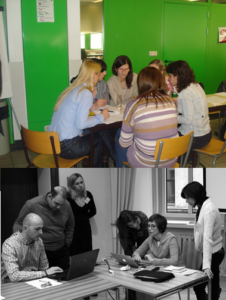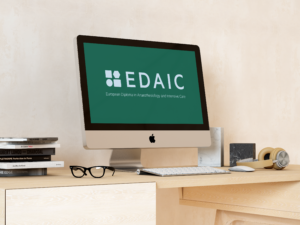Newsletter 2022
Newsletter December 2022: Learning and Teaching with ESAIC
ESAIC Teach the Teacher Masterclass Committee Chairperson
In late October, 20 anaesthesiologists from all over Europe gathered in Crete to learn, work, and collaborate. The goal of the meeting was to improve their teaching skills. This was the first part of the ESAIC’s Train the Trainer (Teach the Teacher – or simply TTT) course. It was a busy week, with lectures, workshops, and presentations, but in the end – we all went home with a few more tools in our belts and new ideas and concepts about how we can improve things at our home institutions. Even more important – we met other anaesthesiologists emersed in learning and created a network that can collaborate across Europe and share ideas and projects.
The idea behind the course was perceived around the turn of the century, shortly after the fall of the iron curtain. The opening of the eastern European countries revealed a significant gap in medical practices between the east and west. Prof. Gabriel Gurman was one of the first to identify this gap and take steps towards closing it. Having a background in medical education, he turned towards education as a tool to close the gap. He convinced the World Federation of Societies of Anaesthesiologists (WFSA) to sponsor a fellowship in his department for East European graduates. However, he soon figured that it was not just knowledge. He figured that the most critical aspect in spreading knowledge is passing it on – this will govern the ability to close the gap!
Thus, Prof. Gurman initiated the ISIA (International School of Instructors in Anaesthesia-ISIA), sponsored by the WFSA. The course was open to Eastern European anaesthesiologists. Beyond medical education, the course dealt with operating room management, professionalism, and other relevant subjects. This course was a great success, and over the next few years, four such courses were launched, each including three one-week workshops taking place at different locations across Europe. However, as time passed and the gap gradually closed, the focus of the WFSA switched to other areas. Thus, a decade ago, the European Society of Anaesthesiology took over the course as part of the projects supported by NASC, which at that time was led by Dr O’Sullivan.
As part of the move into European Society, the course changed its face – led by Dr Bromley, the system was trimmed, and the emphasis focused on education. Furthermore, the course opened to all European countries – east and west alike, as the issue of providing high-quality education seemed global.
To become anaesthesiologists, we must observe and learn much. Along the way, we encounter some good and some not-so-brilliant teachers. This experience allows us to teach at a certain level. However, most providers need to learn how to prepare correctly, and those that do mostly learn it via brief courses such as ACLS instructors with a limited scope. At some point along the way, we become teachers – we share our knowledge with younger medical students and residents as part of our job without knowing how to do this. This problem is not unique to a single country, and thus it became the objective of the course – to provide expertise in planning, preparing, and performing high-quality teaching.

The first TTT course, held in 2013-2014, was designed such that the first week covered basic teaching skills and introduced the ideas of interactive teaching. The methodology included a high level of participation by students and teachers with many small group work sessions and workshops. This has continued to be the philosophy of the course up to the present day. The second week had objectives related to more comprehensive subjects within the area of teaching, including assessment, teaching safety, and using simulation; the latter was then in its infancy but has gained much attention since. The faculty of the course was initially based on the ISIA teachers and graduates. However, faculty recruitment continued as time passed, and many of the current faculty (including the author) are graduates of the TTT course.
The course is constantly changing and evolving. The original method dedicated time to subjects such as competency-based education, giving feedback, proper use of PowerPoint presentations, planning, designing curriculum, and interactive teaching. With time, some topics, such as curriculum design and preparing PowerPoint presentations, were abandoned while other concepts, such as non-technical skills and assessment methods, were introduced instead. Some themes, such as interactive approach and feedback, remained as those are fundamental skills for teaching. As time passes, new subjects in education (e.g., online teaching) arise, and we introduce them accordingly.
We do want to thank the ESAIC for supporting this endeavour, the ESAIC leadership for considering education a high priority, the ESAIC support team (especially Alina Rotaru and Els Sung, who have worked so hard with us over the years), The Faculty (past and present) and the many participants, who pass on the knowledge at their home countries and institutions!
If you’re interested in teaching – we hope to see you with us next year!
[maxbutton id=”1″ url=”https://www.esaic.org/newsletter/” text=”Read the Newsletter” ]










